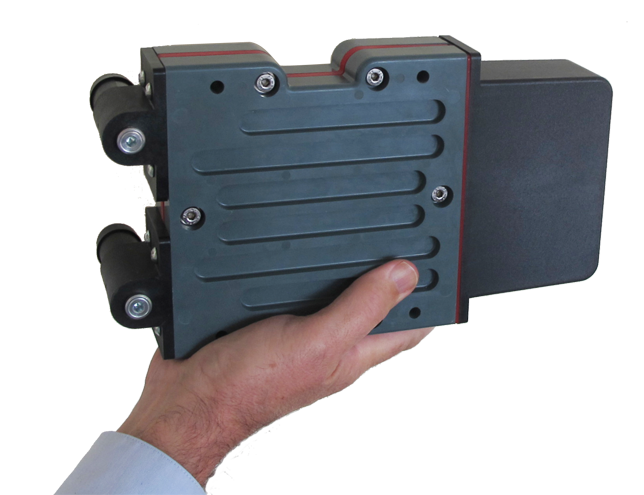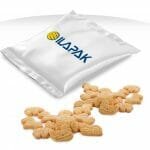The word paper is etymologically derived from papyrus, material produced from the pith of the Cyperus paprus plant that was used in ancient Egypt as early as 3,000 BC. Later, in China, scrolls of silk used in books were replaced for a cheaper and more practical substitute. With all inventions, alterations are made over time to offer alternative solutions.
The EV2 is a liquid cooled resistor, suitable for medium voltage industrial applications. Initially designed as a means of redirecting dissipated energy during braking in electric vehicles, the technology is also popular in marine, military and construction applications.
The inside counts
The EV2 features two plates made from advanced ceramic, a material that brings a multitude of benefits. Indeed, the EV2 has the same insulation properties as any other ceramic, with insulation capable of withstanding up to 3kV. However, the thermal properties are such that it will exceed typical expectations and conduct heat almost as effectively as aluminium — a good insulator is normally a bad conductor.
Placed in between the ceramic tiles is a plate that conducts electricity through the resistor. Inside the plate is an element made from one of two materials; stainless steel or graphite.
Stainless steel
When developing the EV2, the first choice of material for the plate was stainless steel. This is perhaps an obvious selection, due to its undeniable strength.
Not only is stainless steel the less brittle of the two materials, meaning that the plate won’t easily crumble or break during manufacturing and transportation, but it is also best suited to low resistance applications. In addition, the material boasts a positive temperature coefficient, meaning that resistance value increases with an increase in temperature. This reduces the chance of hot spots, which could lead to fractures in the element and cause it to break.
Going for graphite
The search for a material with higher resistivity than stainless steel led Cressall to develop a resistor using graphite, such as that traditionally used in vacuum furnace elements. The graphite is poured into the ceramic tiles and heated to over 400 degrees Celsius, which dries the material into a solid structure.
Graphite has a much higher resistance to electric current, with electric resistivity 18 times greater than stainless steel, which helps to achieve resistances up to 20Ω, allowing it to cover a broader range of applications.
Although graphite has desirable resistivity values, being pure carbon, the material is generally prone to oxidising. Cressall has combatted this by encapsulating a graphite element within the EV2 to protect it from the air.
Graphite has a lower tensile strength than steel, but this does not hinder its potential. Although best suited to higher resistance, for applications that require a lower resistance, the thickness of the graphite can be increased. Cressall currently manufactures its EV2 with graphite of one and two millimetres in thickness. However, developments are underway to increase the thickness of the graphite element. This means that the entire EV2 range can be covered by a single material.
Paper has evolved so much over the years that we are beginning to favour going completely paperless over keeping written records. Thanks to its high resistivity and Cressall’s ability to overcome challenges, graphite is now the most commonly selected material in the company’s EV2 resistor.

Here, Simone Bruckner, managing director at power resistor manufacturer Cressall Resistors, explains the benefits of two different materials used in Cressall’s EV2 resistor.








